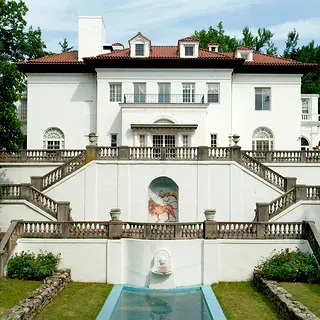
Walker, Whitney, and Other American Women Whose Stories Need Celebrating
March is Women’s History Month, a time when we as a nation reflect on the contributions, stories, and struggles of American women. It seems a bit strange—given that we are over half the country’s population—that women get just one month, but this is actually an improvement: Originally, it was Women’s History Week, and before that, only a few short decades ago, the only women whose stories made it into textbooks tended to be First Ladies.
Even now, 28 years after Congress made Women’s History Month official, strides for women’s equality and recognition across the spectrum continue to lag behind. Preservation is no different. Over the years, we have not always done what we could to highlight and preserve places that tell the rich, diverse stories of American women.
So here at the National Trust—where I am proud to serve as the first woman president and CEO—we are working hard to save places that tell these stories, and help us to better understand who we are as a nation. And there are plenty of remarkable ones to be told!

photo by: Wikimedia Commons, Author Unknown
Madam C.J. Walker in an early automobile.
Take Sarah Breedlove, better known as Madam C.J. Walker. Her story, in essence, is the rags-to-riches “American Dream,” and her success is all the more remarkable because she thrived when the “glass ceiling” for African-American women in the business world was more like concrete.
Born only two years after the Civil War, Madam Walker was the first free-born person in her family. As she herself tells her tale, “I am a woman who came from the cotton fields of the South. From there I was promoted to the washtub. From there I was promoted to the kitchen cook. And, from there, I promoted myself into the business of manufacturing hair goods and preparations.”
She promoted the right person: The beauty products business Madam Walker founded ultimately employed more than 23,000 sales agents, and her entrepreneurial vision helped to make her the first self-made female millionaire in the United States. Madam Walker’s 34-room mansion, Villa Lewaro in Irvington, New York, is today one of our National Treasures. It stands as a testament to her remarkable success, and her belief in hard work and perseverance.
Stay connected with us via email. Sign up today.
Even as Madam Walker was building her business, another remarkable woman, Gertrude Vanderbilt Whitney, was rebelling against her high society upbringing to create a world all her own. Born into the wealthy and renowned Vanderbilt family in 1875, she aspired to become a sculptor and arts patron, and she used her wealth to buy a studio in Greenwich Village’s MacDougal Alley in New York City.
This purchase, she reminisced later, prompted “a chorus of horror-stricken voices, a knowing lifting of the eyebrows or a twist of the mouth that is equally expressive” from those who thought a woman’s place was definitely not the art world.
But Whitney had the last laugh. She encouraged American artists at a time when more established art institutions considered them provincial. And while many collectors balked at the daring new trends coming into vogue then, she gave these budding artists a platform.
Today, the Whitney Museum is one of the foremost 20th-century art collections in the country, and the Whitney Studio—another of our National Treasures—remains a haven for artists within the New York Studio School campus.

photo by: New York Studio School
Gertrude Vanderbilt Whitney with her assistant, Salvatore F. Bilotti, at work in her sculpture studio on MacDougal Alley, c. 1939, on the maquette for her sculpture "Spirit of Flight" exhibited in the 1939 World's Fair in New York.
Madam C.J. Walker and Gertrude Vanderbilt Whitney—a businesswoman who made herself a millionaire and a millionaire who made herself an artist—are more than just contemporaries. They are two women who defied the conventions of their day to achieve unprecedented success, and two uniquely American stories. We should remember and honor these women, and ensure their legacy continues in places like Villa Lewaro and the Whitney Studio.

photo by: New York Studio School
Facade, New York Studio School, 8 West 8th Street, New York City, formerly the art studio of Gertrude Vanderbilt Whitney.
At the National Trust, we are actively working to find and help save more places that tell the significant stories of American women. So tell us: What places should we be aware of and focus on? What unique and fascinating slices of women’s history should we work to preserve for the benefit of future young women leaders and generations?
Hedy Lamarr, the film actress whose pioneering “frequency-hopping” invention helped pave the way for modern wireless technology. Jane Jacobs, the urban activist whose work presaged so many of our recent findings about the benefits of older buildings for cities. Mae Jemison, the doctor and Peace Corps volunteer who became the first African American woman in space. Ann Pamela Cunningham, who brought Northern and Southern women together after the Civil War to save Mount Vernon, and who is effectively the American founder of the preservation movement.
There are many fascinating stories, and with your help, they can be part of our American story.

.webp)
